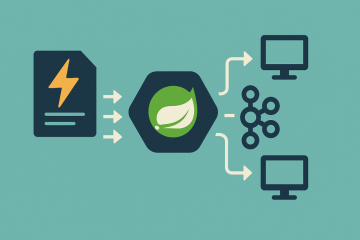Introduction
Database performance is critical to the overall speed and scalability of Spring Boot applications. As applications grow in complexity and user base, ensuring efficient data access becomes essential to delivering low-latency responses and preventing system bottlenecks.
In this blog, we’ll explore practical techniques to optimize database performance in Spring Boot applications by leveraging built-in features, best practices, and tuning options.
1. Choose the Right Database and Driver
The first step to performance is using the right tool for the job:
- Use PostgreSQL or MySQL for general-purpose workloads.
- Choose MongoDB for flexible schema or NoSQL requirements.
- Always use the latest stable version of JDBC drivers for optimal compatibility and performance.
2. Connection Pooling with HikariCP
Spring Boot uses HikariCP as the default connection pool, known for its high performance and reliability.
Tips:
- Tune connection pool properties like
maximumPoolSize,idleTimeout, andconnectionTimeoutinapplication.properties:
spring.datasource.hikari.maximum-pool-size=20
spring.datasource.hikari.idle-timeout=30000
spring.datasource.hikari.connection-timeout=30000- Monitor pool usage using metrics (
/actuator/metrics/hikaricp.connections.active).
3. Use Lazy Loading Wisely
Eager fetching can load unnecessary data, leading to performance degradation.
Best Practice:
- Use
@OneToMany(fetch = FetchType.LAZY)unless eager loading is explicitly required. - Use DTO projections instead of fetching entire entities when full data isn’t needed.
4. Leverage Spring Data JPA Projections
Reduce data transfer and load by fetching only necessary fields.
Example:
public interface UserSummary {
String getUsername();
String getEmail();
}
List<UserSummary> findByActiveTrue();5. Optimize Queries with Indexes
Ensure critical queries use indexed columns:
- Use database
EXPLAINorANALYZEstatements to verify query plans. - Index foreign keys, frequently filtered columns, and join keys.
Avoid over-indexing, as it impacts write performance.
6. Enable Query Caching
Hibernate supports 1st and 2nd-level caching.
Configuration:
- Enable second-level cache using providers like Ehcache or Caffeine.
- Annotate entities:
@Cacheable
@Cache(usage = CacheConcurrencyStrategy.READ_WRITE)7. Use Pageable and Batch Fetching
When dealing with large datasets:
- Use
Pageableto fetch data in chunks. - Use
@BatchSizeannotation to reduce the number of SQL calls:
@BatchSize(size = 10)8. Monitor SQL Logs and Slow Queries
Enable SQL logging in development:
spring.jpa.show-sql=true
spring.jpa.properties.hibernate.format_sql=trueUse tools like p6spy or Spring Boot Actuator to identify slow queries in production.
9. Profile with APM Tools
Use Application Performance Monitoring (APM) tools like:
- New Relic
- Dynatrace
- Elastic APM
These provide insights into query times, slow transactions, and database bottlenecks.
10. Keep Your Schema and ORM Aligned
Mismatches between your database schema and JPA entities can cause inefficient joins and unexpected results.
- Use tools like Flyway or Liquibase to manage database migrations.
- Align entity mappings with current schema constraints.
Conclusion
Database performance optimization in Spring Boot requires a holistic approach—from choosing the right data model and connection pool tuning to leveraging caching and monitoring. Following these strategies ensures that your application remains fast, responsive, and scalable as it grows.
Focus on incremental improvements and continuous monitoring for sustained gains in performance.



0 Comments